”In all things of nature, there is something of the marvellous.”
Aristotle
There’s just something about landscape art that never gets old. Nature never ceases to inspire, and the notion of ‘place’ lies deep within our human psyche. But there’s also something extra special about textile art landscapes: colour and texture.
We’ve gathered five different landscape artists whose art is dedicated to showcasing their favourite sights and grand adventures. Each uses key landscape design elements, such as line, colour, shape, and perspective, but their techniques are as diverse as the terrains they present.
Martha Fieber literally stitches blades of grass and single blossoms that collectively engage the eye, while Wen Redmond creates digital landscapes that expertly incorporate photography and stitch. Monika Kinner uses yarn to create rich and chunky fields and sky, while Roberta Wagner uses paper, fabric and thread to create more abstract landscapes. Shin-hee Chin wraps up our journey with quilt-sized tree branches that reflect light and are entirely stitched by hand.
Enjoy this armchair hike into the great outdoors and prepare to be inspired.
Martha Fieber
When you look at Martha Fieber’s work and realise everything you see is hand-stitched, it takes your breath away. Literally hundreds, perhaps thousands, of tiny stitches and French knots bring each blade of grass, blossom or other landscape feature to life.
‘Hand stitching gives me control and lends itself to the evolution of the piece due to the slow process and development of the original artistic idea. I paint and weave with fabrics, fibres, yarns and ribbons.’
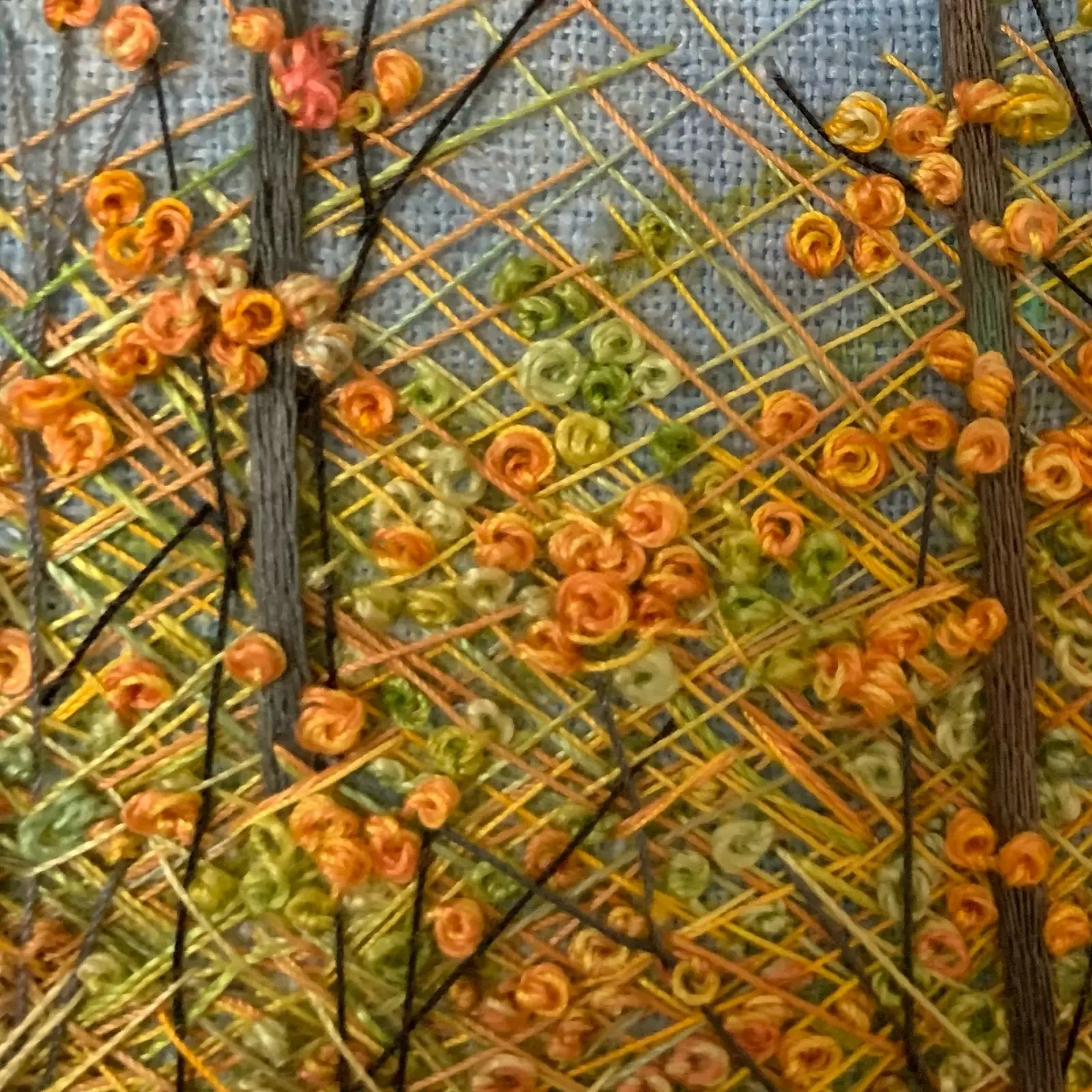
This piece was inspired by a walk in Hiawatha National Forest (Michigan, US) on a perfect fall day. When Martha came across Colwell Lake, she took photos from various angles to capture the long-distance views, contrasts and colours that lend themselves to her techniques.
Martha doesn’t use a sketchbook or otherwise draw on her background fabric before stitching. Instead, she stitches intuitively from a horizon line or other starting point on the linen.
Layers of stitches are built up to create texture, shading and depth. For this piece, she used single strand hand-dyed cotton threads on a hand-dyed linen background. The trees are made from silk. She estimates the stitch work alone took 10 weeks.
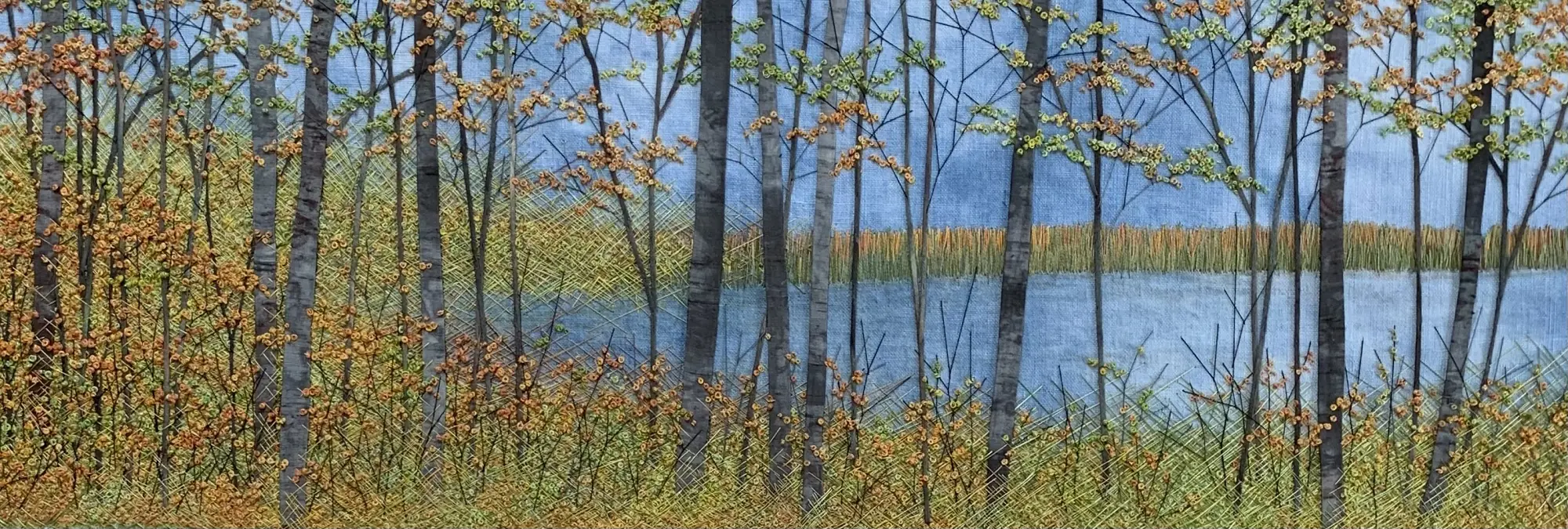
‘I use only four types of stitch: straight, French knots, couching and chain stitch to achieve the incredible depth and perspective you see in my work.’
Martha is self-taught in embroidery and weaving. She gave up a career in engineering for art in 1999, and she’s confident that engineering experience has played an integral part in helping plan and execute her complex and detailed landscapes.
‘Landscapes are peaceful to me and infinitely variable considering colour, light, wind, season, etc. I’m continuing to try new ways of making things work and look realistic. There are always new colours and materials with which to experiment.’
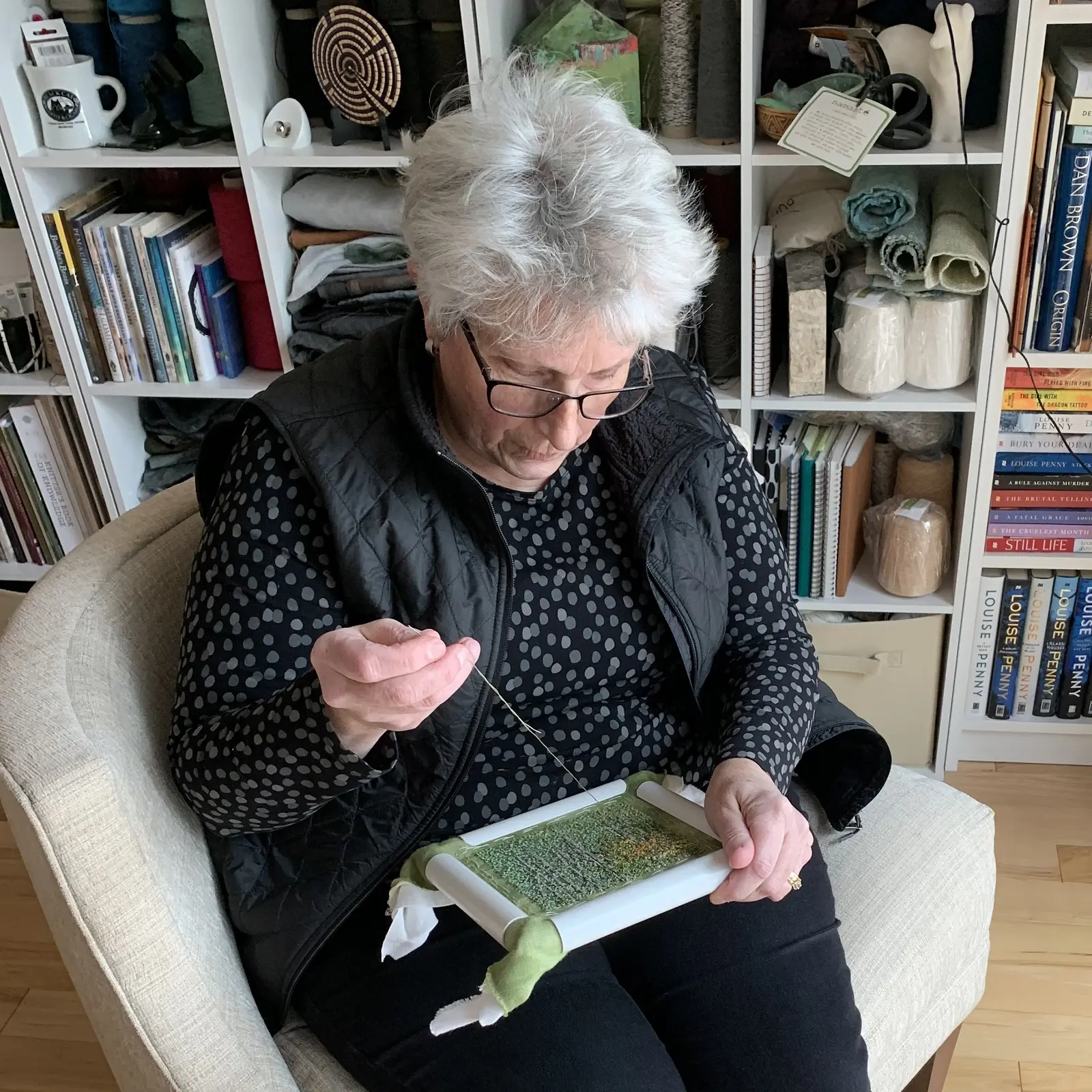
Martha Fieber is based in Michigan (US) and has exhibited in both solo and group shows across the US, including Fineline Designs Gallery in Ephraim, WI and the Hartwig Gallery in Escanaba, MI. Martha has also received numerous awards and is a member of a number of textile art groups, including the Fiber Artists Collective and Surface Design Association.
Website: marthafieber.com
Wen Redmond
Wen Redmond masterfully infuses digital imagery into her textile art, mostly using her iPhone and an inkjet printer at home. While she has devoted many years perfecting her process, her constant experimentation with substrates, paint and other mixed media ensures no two works are alike.
‘One of the joys of photography is layering and playing in photo editing apps and programs: a 21st century artist’s toolbox! I love the serendipity of my process, often yielding surprising results.’
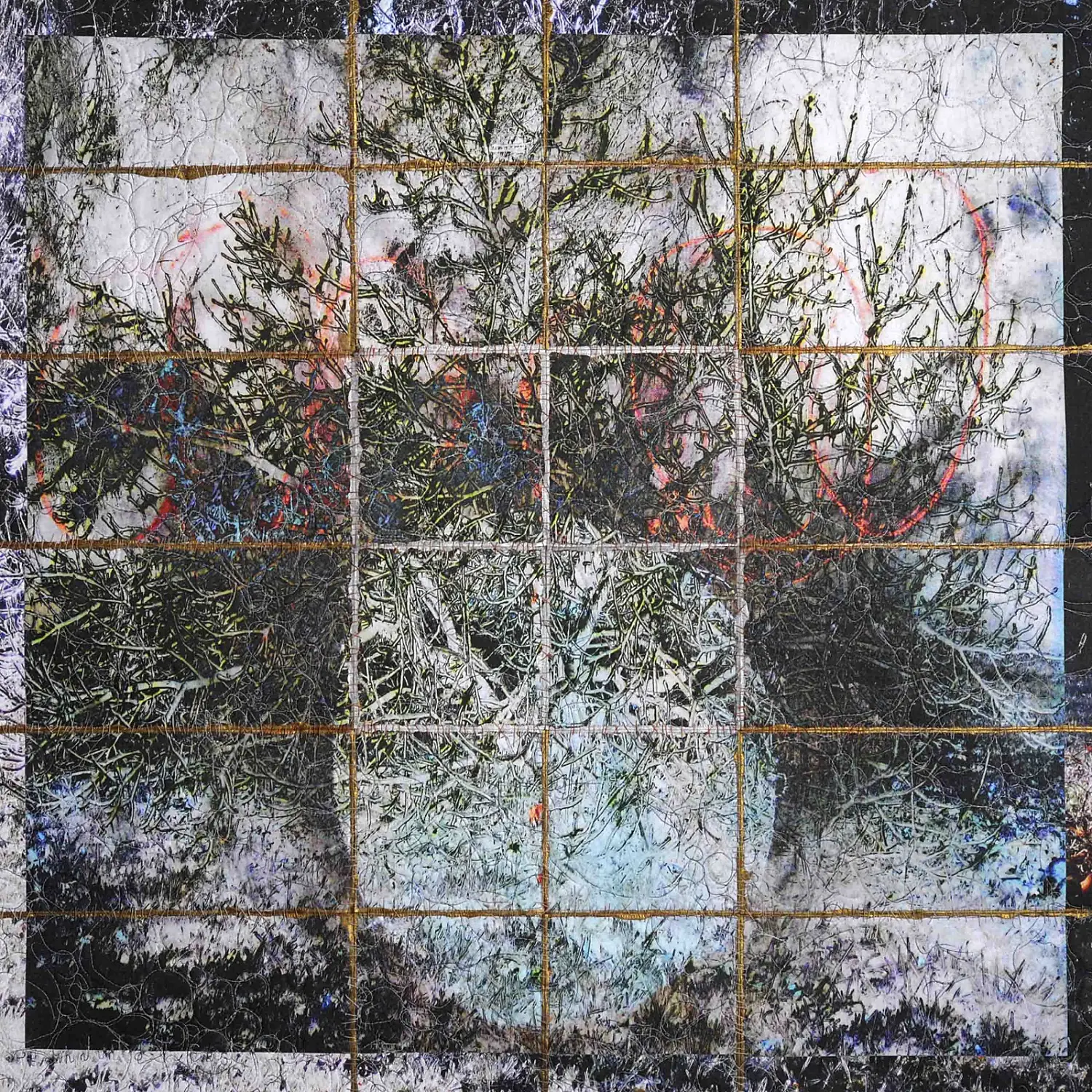
For this piece, Wen used digital technology to blend two photos. The first photo is an icy bush discovered while cross-country skiing by a lake near her New Hampshire (US) home. A winter storm the night before had coated both the ice-covered lake and everything around it with a thin layer of snow.
‘The bush looked as though it had been dipped in ice. The sun had come out, and each branch sparkled and shimmered in the early morning’s low light.’
The second photo was a detailed tree image from a prior work. Once the photos were digitally merged, Wen printed the new photo onto a digitally prepared cotton canvas.
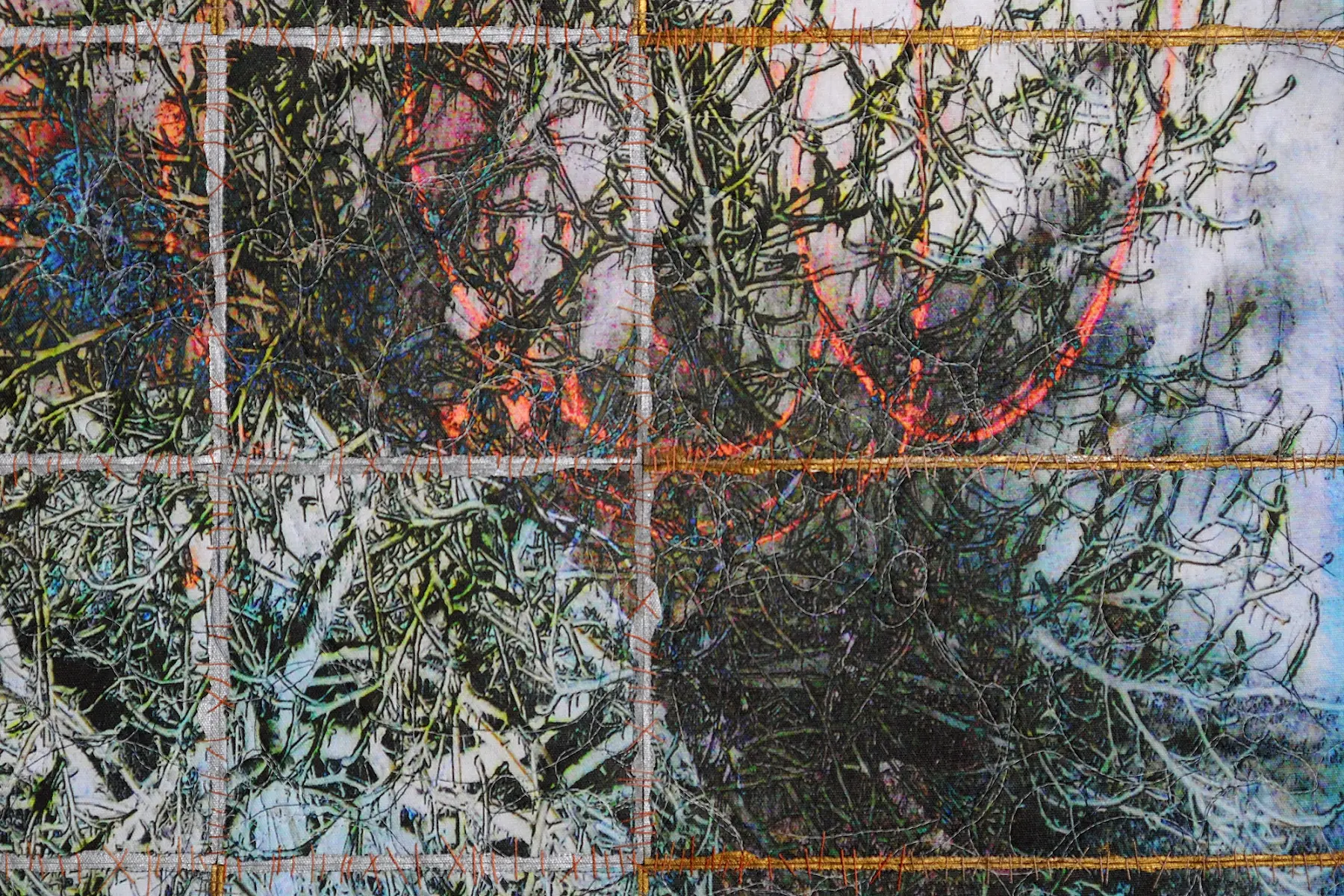
For her ‘segmented presentation,’ Wen printed the image as large as possible and then fused the printed fabric onto felt. She then machine quilted the entire piece before cutting it into large pieces. Each piece was then edge stitched and painted along the edges. Once dry, everything was hand sewn back together with variegated pearl cotton using a running stitch.
‘I love to explore photography through printing manipulated photographs onto mixed media substrates. Every work generates an artistic tension, followed by the excitement of the actual creation of the work.’
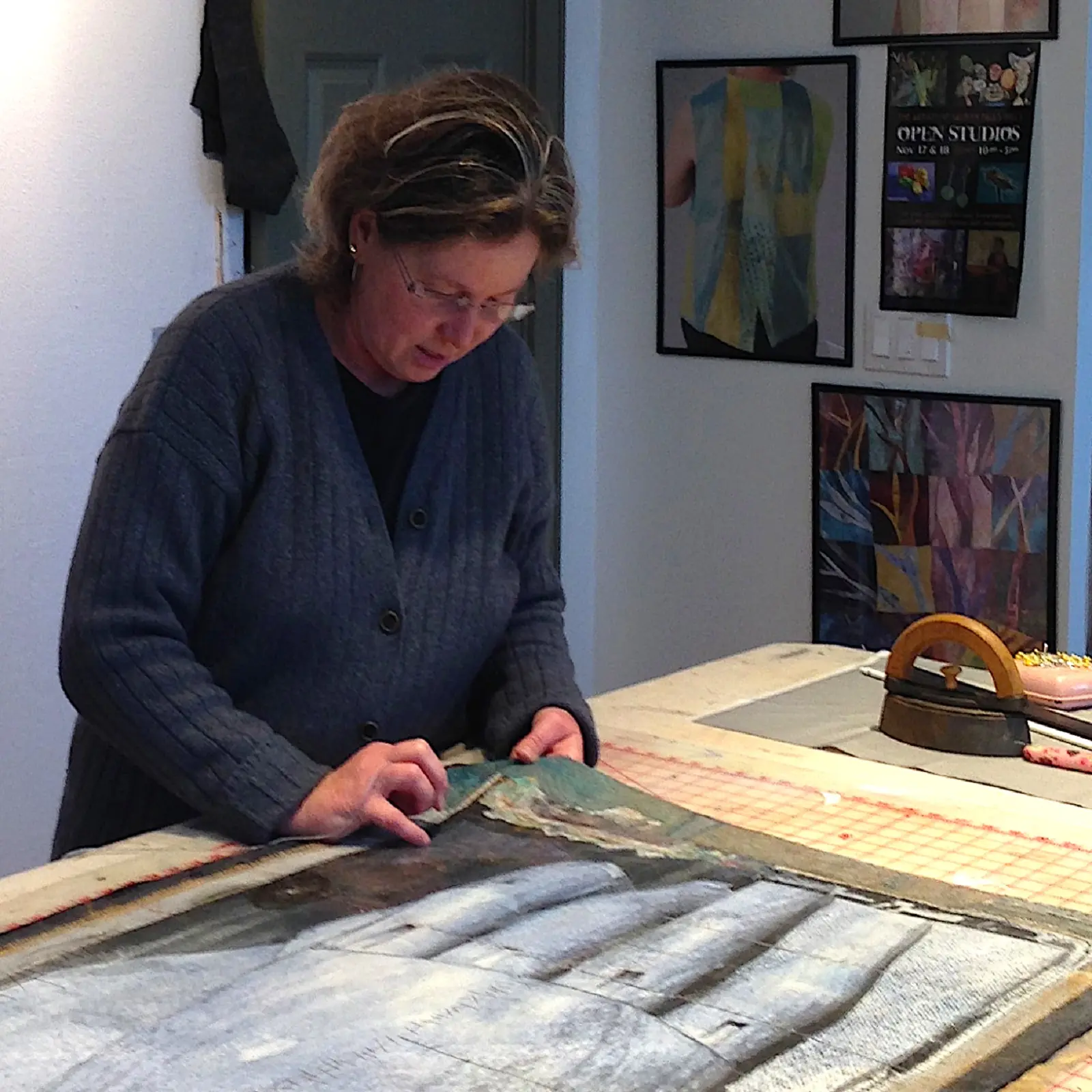
Wen Redmond has received numerous awards, including the Acquisition Award at the 2019 Handcrafted Juried Exhibition at the Maria V. Howard Arts Center (North Carolina, US). She has had solo exhibitions across the globe and been featured in numerous textile art publications. Wen has also taught many workshops, and her book Digital Fiber Art was published in 2017.
Website: wenredmond.com
Facebook: Art-of-Wen-Redmond
Instagram: @wenredmond
Monika Kinner
Photographer and textile artist Monika Kinner calls herself a ‘prairie-based landscape artist’ who loves capturing Canada’s distinct seasons, big sky and depth of plant life. And when she looks through her camera lens, she’s literally looking for things to stitch.
‘For me, grasses are thread and leaves are ribbons. A vibrant or moody sky is colourfully-dyed fabric. Each moment on the prairie is in constant transformation with light and movement.’
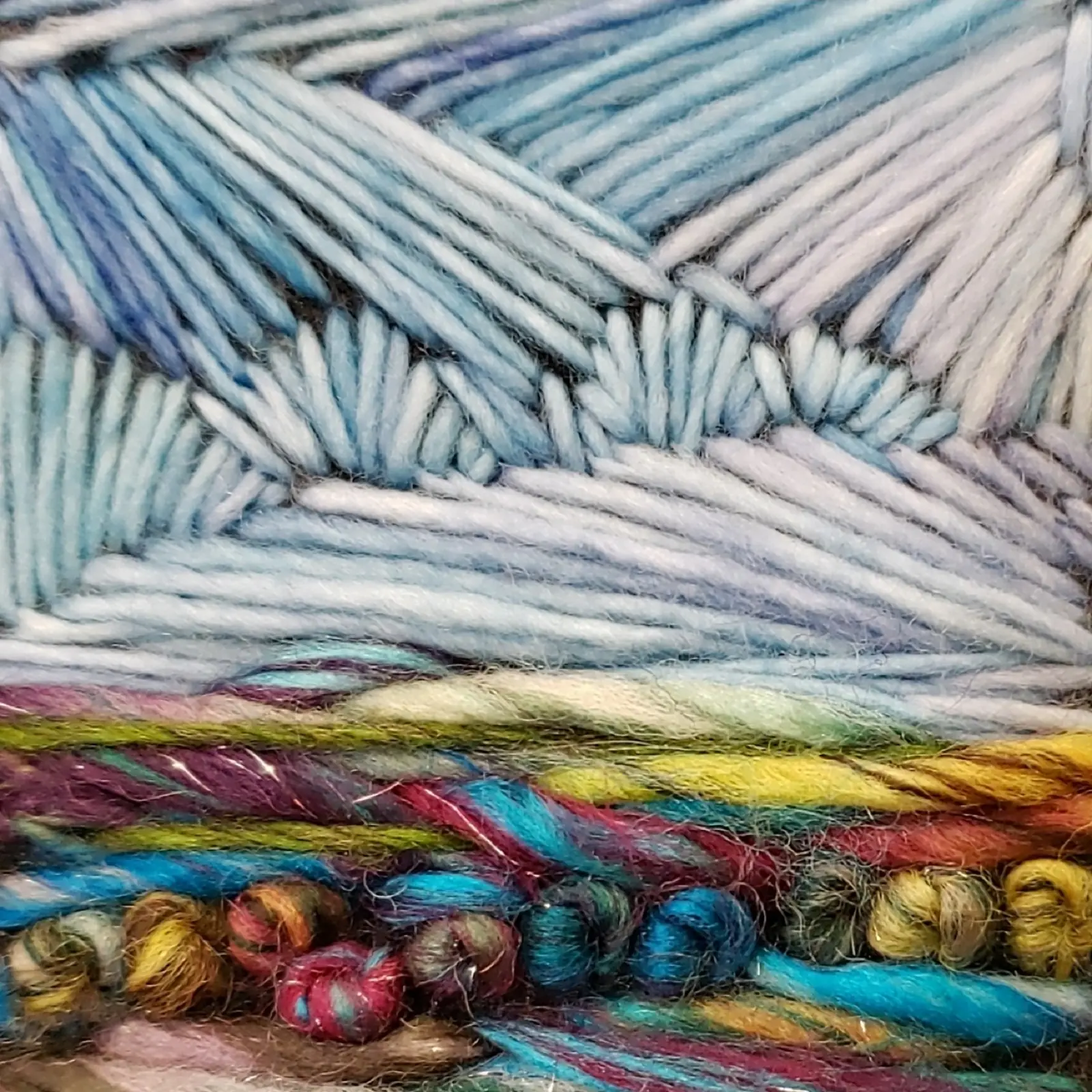
Monika is most known for her ‘thread painting’ work, but this delightful diptych features what she calls ‘yarn painting.’ Monika wanted to move away from her realistic threaded works to explore more impressionistic landscapes. So, she experimented with different materials (yarn and felt) as well as size and scope. The end result was highly textured works that packed big vistas into incredibly small spaces. Each of the two embroideries in this work literally fits in the palm of your hand.
‘I felt my prairie art was 100 per cent prairie, and no me. I wanted energy and emotion and expressiveness. So, when I took a few stitches with variegated yarn, it was like magic. The yarn acted like a paint brush filled with mixed paints. And it was perfectly imperfect.’
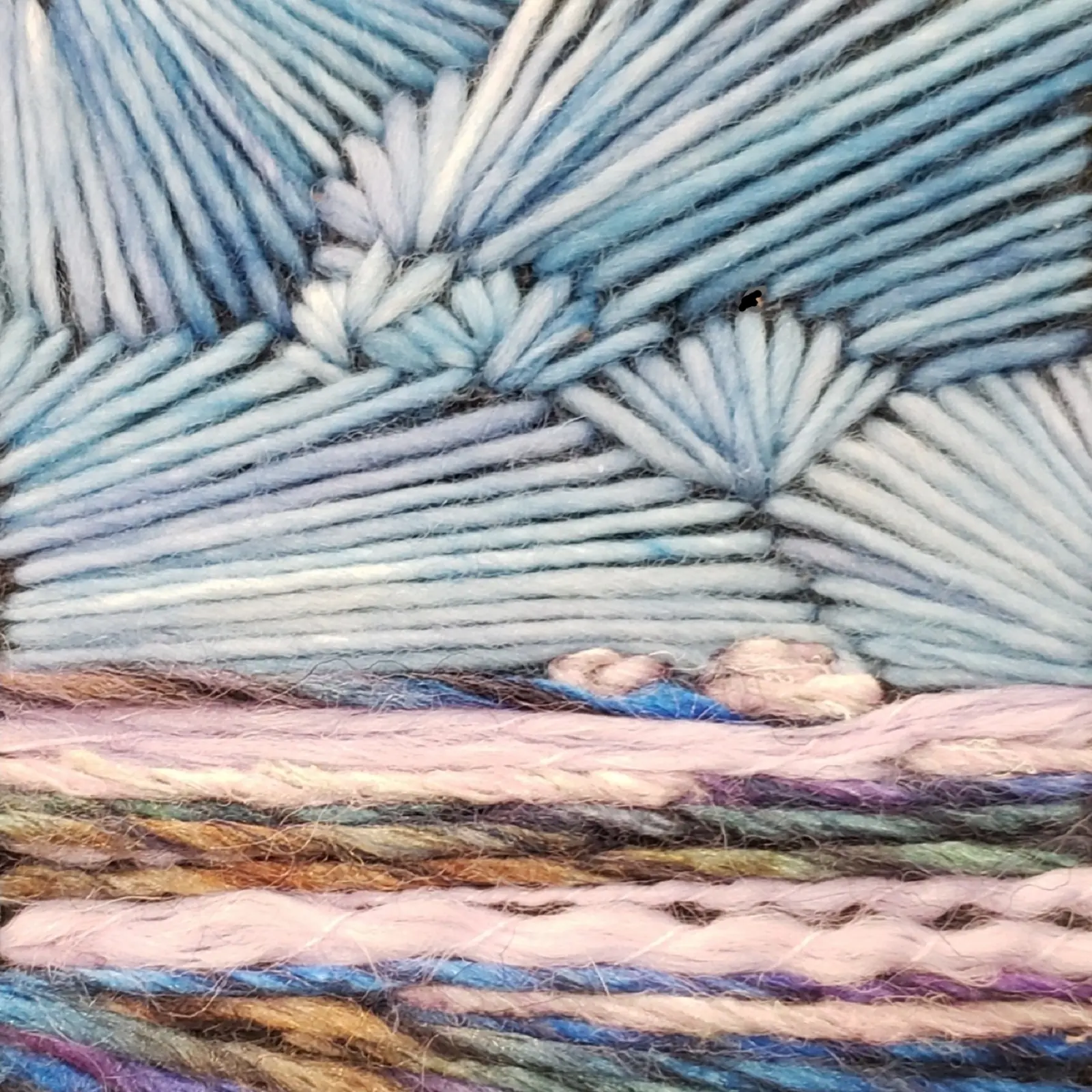
Because Monika’s works are square, she avoids the frustration of round hoops. She instead works on dark felt loaded onto a scroll frame. As pieces are completed, she rolls to a new section and starts another. The felt’s unwoven surface easily allows her large crewel needles loaded with yarn to pass through.
The hand-dyed yarns come from across the globe. And each of the hundreds of straight stitches appear like brushstrokes that cover the entire background.
‘My art depicts real places and personal moments of joy and discovery. Born and raised on the Canadian prairie, my work begins with exploring and capturing the land and sky around me. I am deeply fascinated by the way the same big open landscape transforms in a single day, as well as across the seasons.’
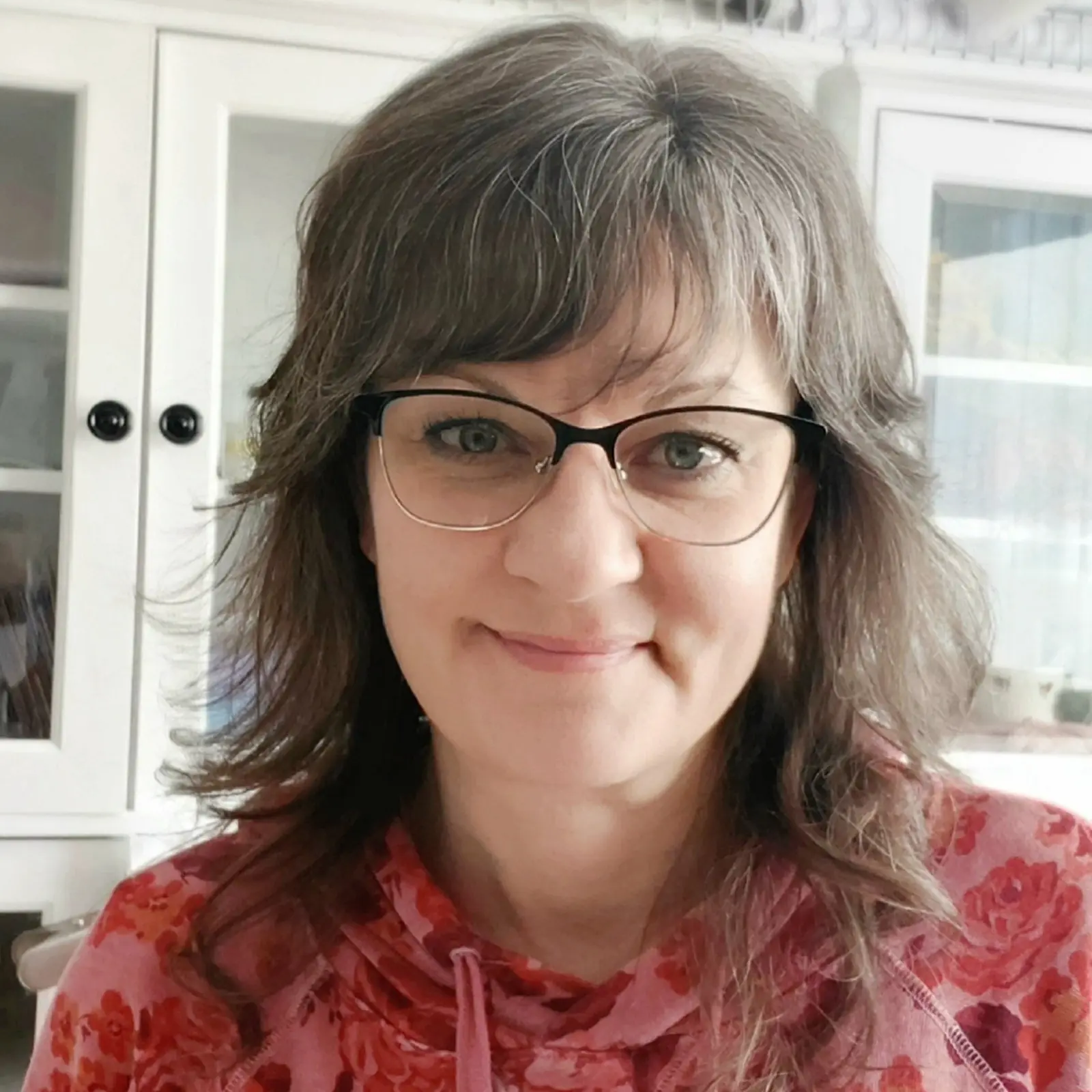
Self-taught in needle arts, pastel painting, drawing and photography, Monika Kinner is an award-winning member of the Focus on Fibre Art Association (national) and a juried member of the Saskatchewan Craft Council and The Society for Embroidered work. Since 2009, her work has been sold, commissioned, published and exhibited across the globe. Her work is currently represented in four galleries throughout her province.
Website: mysweetprairie.ca
Facebook: MySweetPrairie
Instagram: @monika_kinner
Roberta Wagner
Roberta Wagner never names a work or series until she is finished. This piece is from her Apple Orchard series, which had originally started as a series connected to Puget Sound (Washington, US). Roberta’s artistic muse took her from the ocean to a field, and she followed.
‘If I try too hard to capture an idea, the work ends up feeling stiff. I may have a loose idea for a series, but more often my unconscious is at play. I let the materials speak to me, so as pieces started coming together for this work, they reminded me more of apple orchards than Puget Sound.’
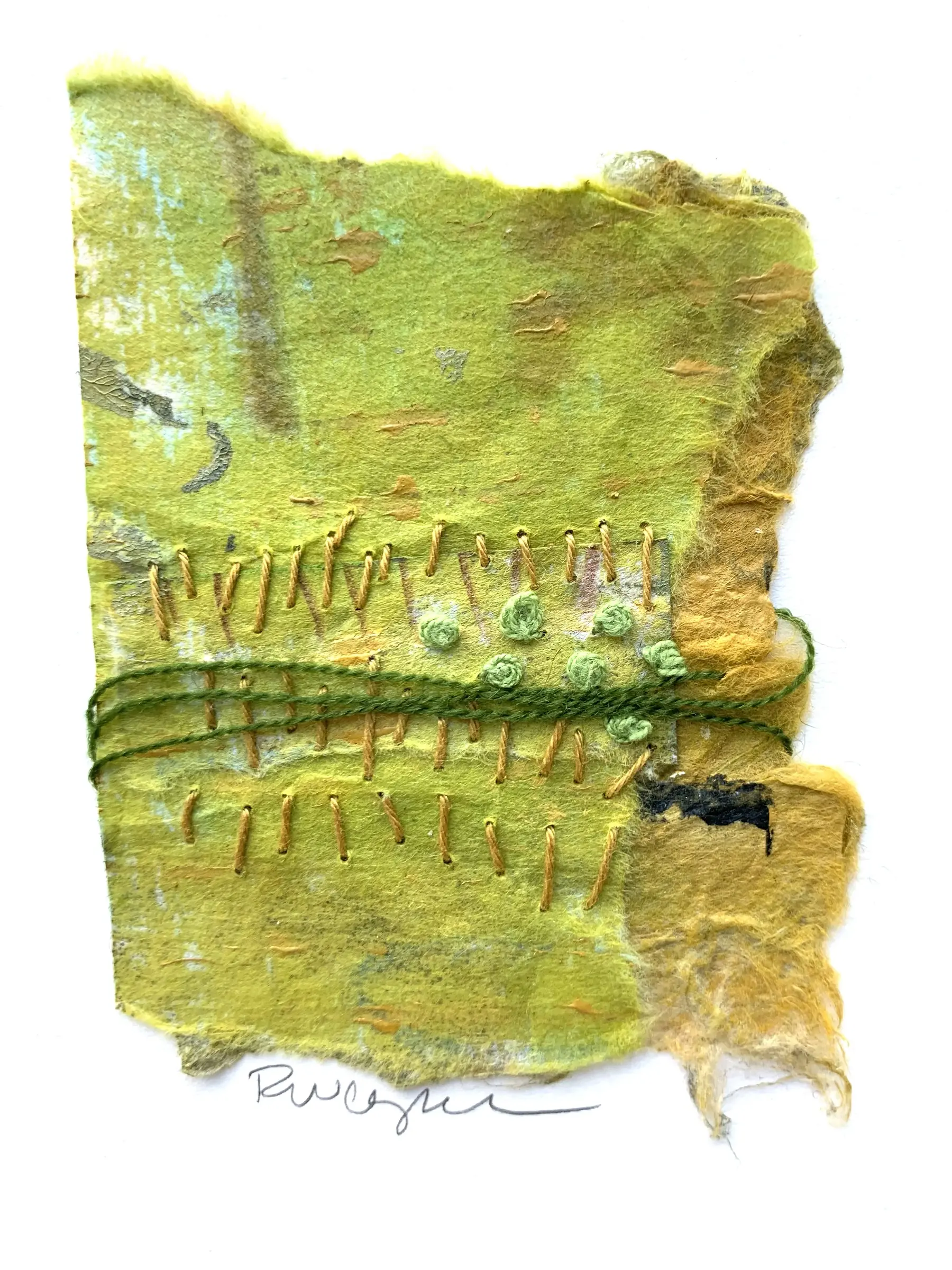
Roberta has a passion for colour, layering and mark making, and this work is no exception. She applied ink, acrylic and marking pens to linen, cotton, organza silk, washi papers and other collage materials. She then tore them up and rearranged pieces that were then stitched together.
‘A beautiful colour palette can make me swoon, so I’ll make a large variety of fabrics and papers in a particular palette. And because I need a lot of materials to make a collage, it makes sense to create a series. I always have leftover materials, so I also often use those in small collages that aren’t necessarily part of the series.’
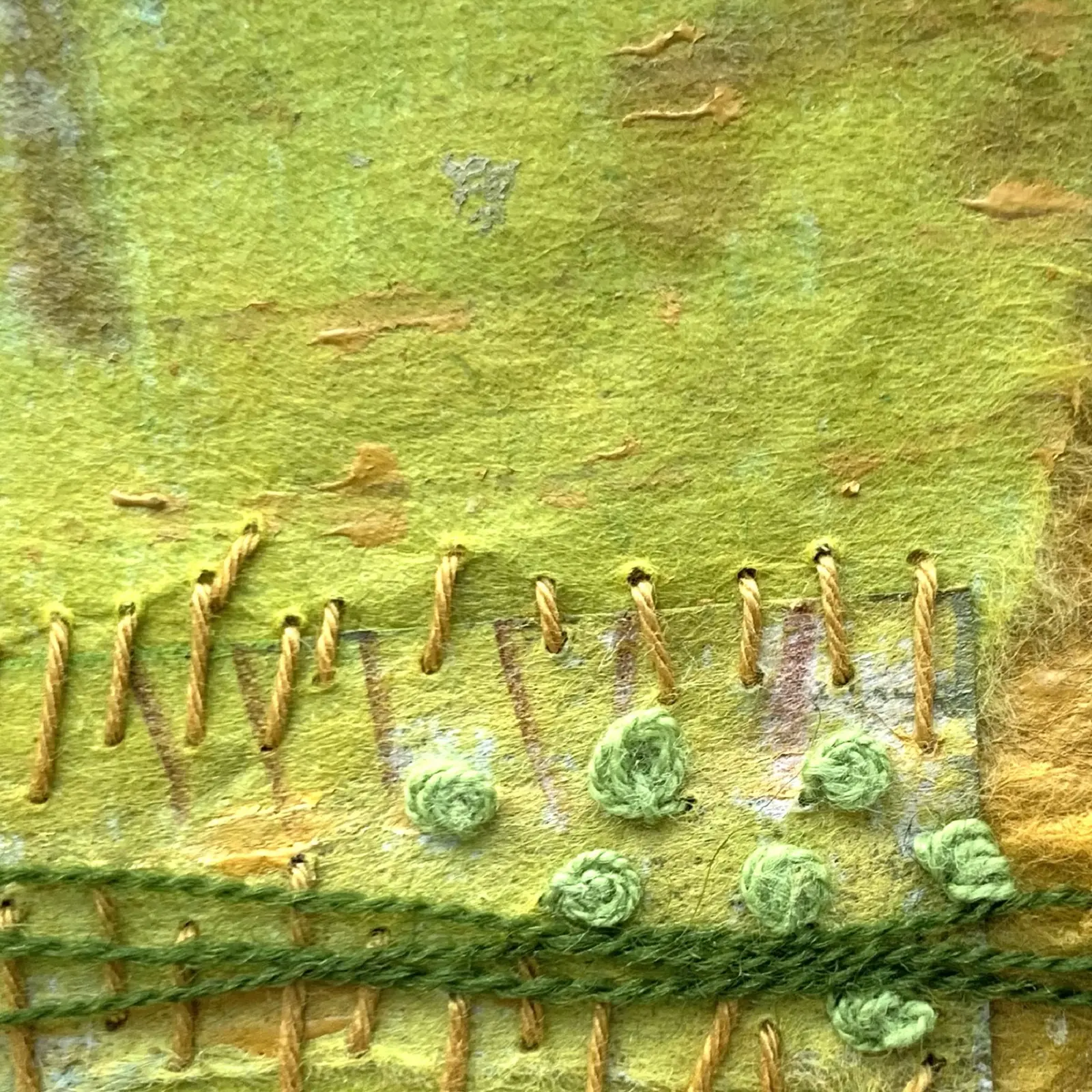
Roberta inherited her love for big vistas from her father who lived in North Dakota (US). His love for the long view and big sky stuck with Roberta. But she also enjoys close-ups, such as the bark of a birch tree or native cedar tree in the Pacific Northwest (US).
‘Mostly I love abstract art. I never want my work to be too literal. I want my work to feel other worldly, transcendent and universal, perhaps reminding viewers of a time or place in their own life.’
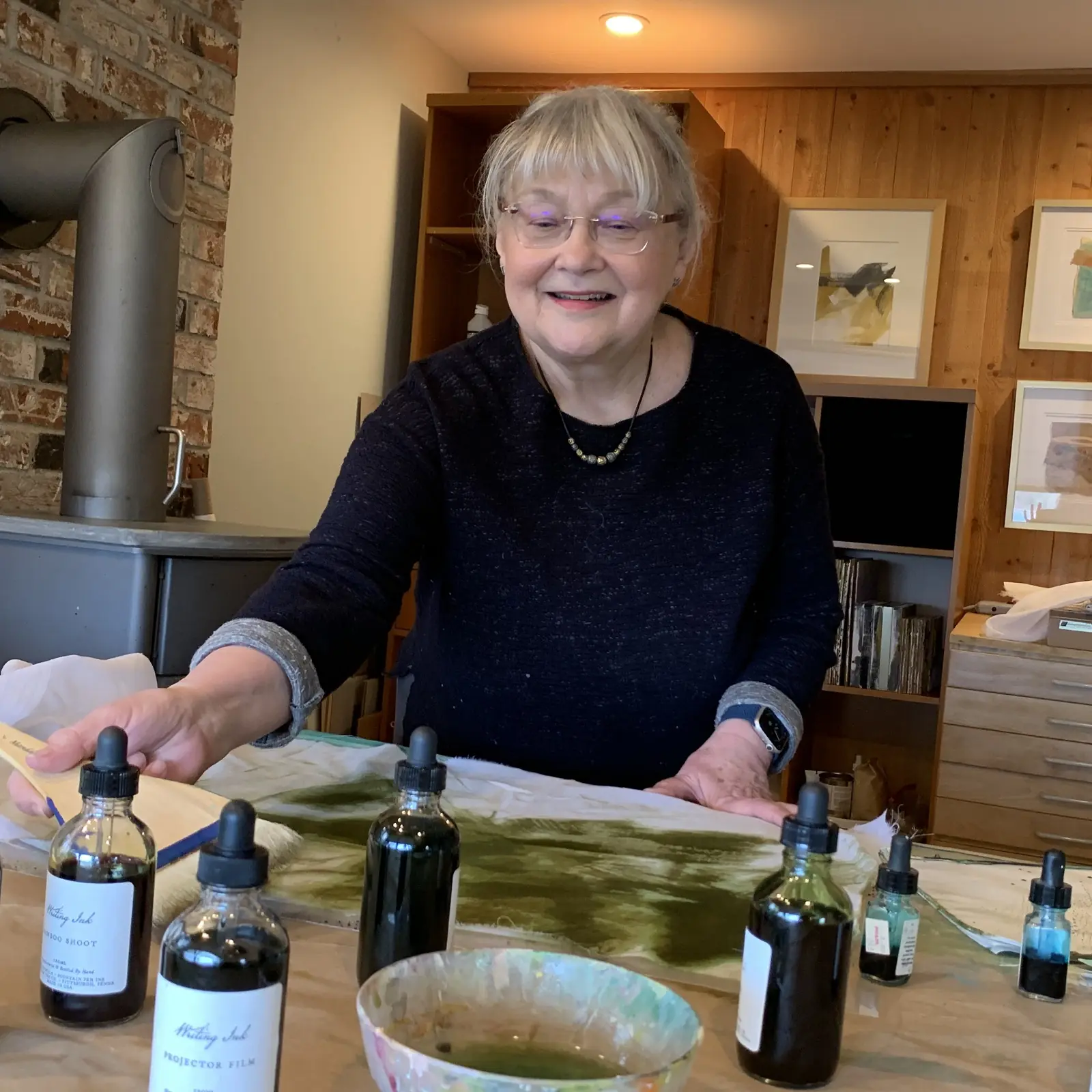
Roberta Wagner is based in Gig Harbor, Washington (US) and has been making art for 40 years in different mediums. She has exhibited in Washington, D.C., Virginia and Washington state galleries (US). Roberta also authored the book Come Walk with Me: Exploring Why Art Matters, which explores how a creative practice enhances intuition and serves in times of personal challenge.
Website: robertawagner.com
Facebook: robertawagnertextileart
Instagram: @robertawagnertextileartist
Shin-hee Chin
As a child growing up in Seoul, South Korea, Shin-hee loved looking up at the trees. She especially enjoyed how dappled sunlight would glimmer through swaying branches.
‘I was awestruck by the powerful beauty of the interplay between light and trees. Later I was delighted to find the word to describe this splendid phenomenon as “shafts of delicious sunlight” or “godlight” and “Komorebi”.’
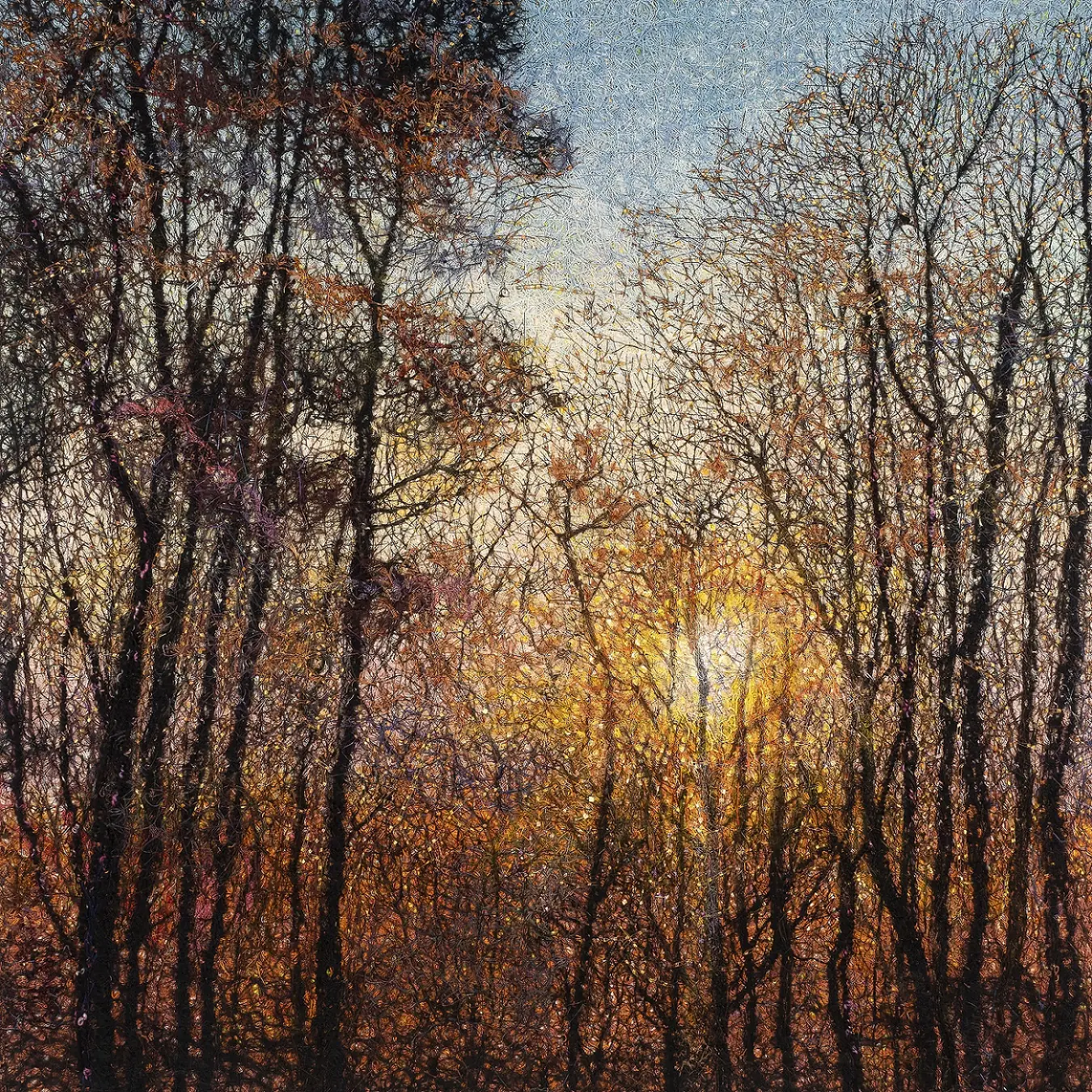
Now living in Kansas (US), Shin-hee sought to capture the way Komorebi came to life in the autumn trees scattered about her town. She started sketching the branches’ organic shapes and structures. But then she discovered a box filled with photos of tree branches she had taken in a photography class 20 years before. The photos were combined with the sketches for the final design.
Shin-hee also carefully planned the techniques and materials she would use in her work. She ultimately decided her family’s well-loved comforter that had journeyed across borders and life events was the perfect foundation for the work.
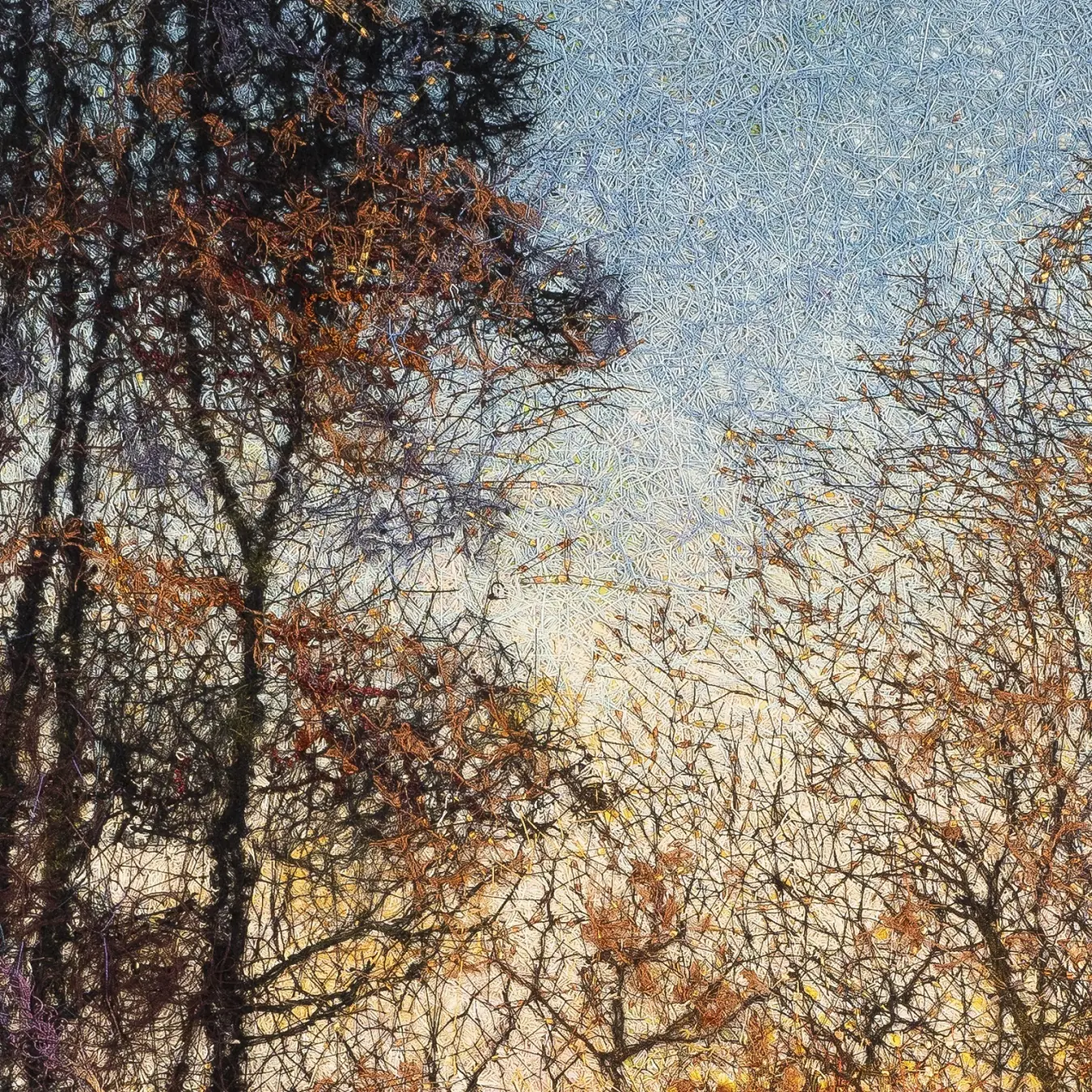
‘The techniques I use have an important meaning for me as a compositional device. Our family’s well-loved comforter had trekked across continents and been used by two now-grown kids. It held 33 years of love, so I decided to stitch all over its surface.’
Speaking of stitching, no photo does justice to the size and detail of Shin-hee’s work. Every mark is a single hand stitch, and there are literally thousands of them scattered across this work.
‘The slow, repetitive nature of stitching enables me to be more mindful of the present moment. There are no short-cuts with hand stitching. Slowing down allows time to re-examine my life carefully, intentionally. I found meaning through the hand work.’
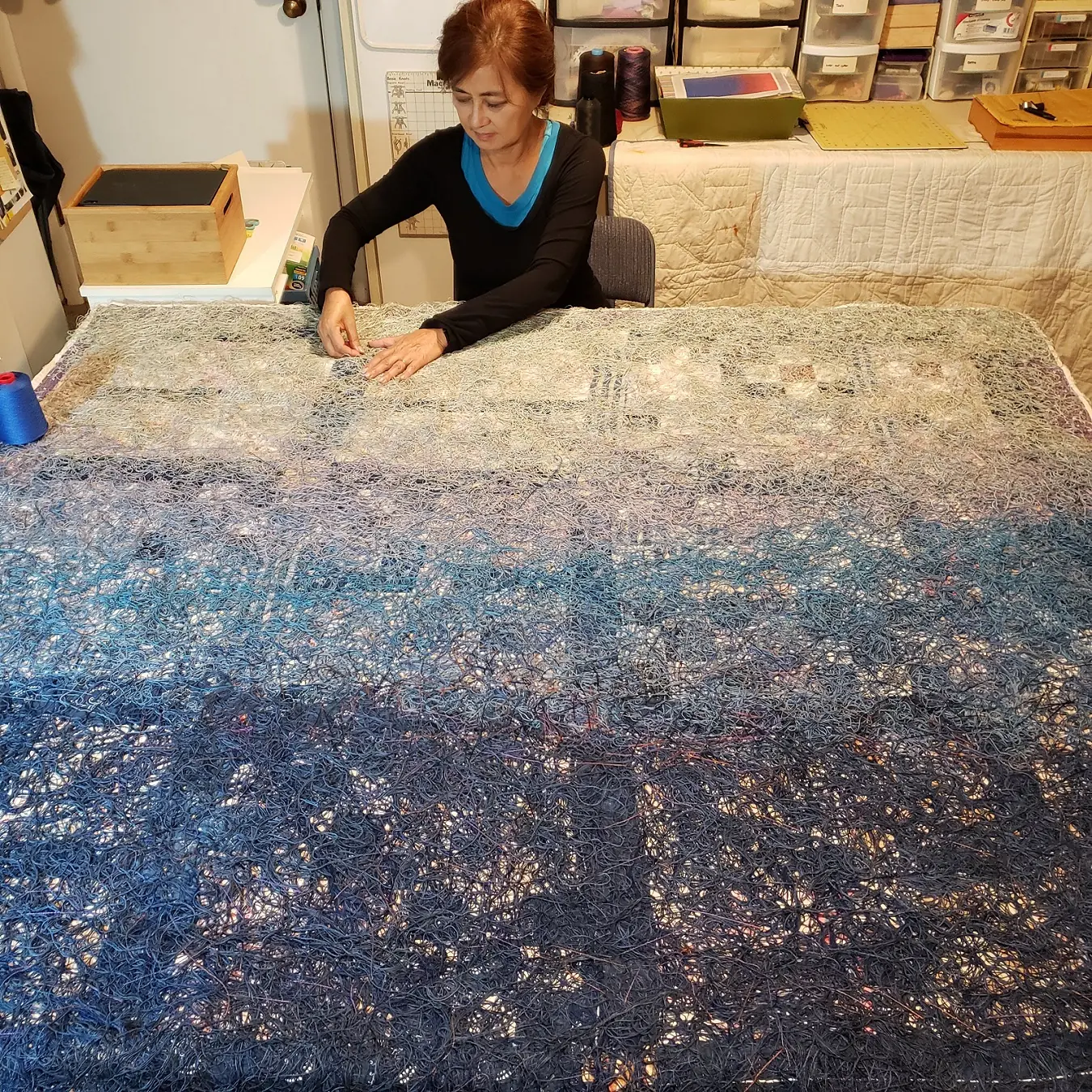
Shin-hee Chin received her BFA and MFA from Hong-Ik University (South Korea). She later earned an MA in Fiber Arts from California State University (US). She has taught drawing, painting, colour theory and mixed media at Tabor College (Kansas, US) for 18 years where she was also elected Distinguished Faculty Member in 2008.
Website: shinheechin.com
Facebook: shinhee.chin
Instagram: @shinheechin
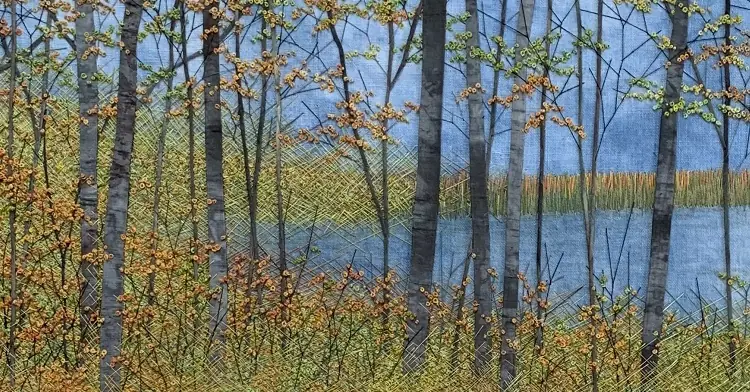
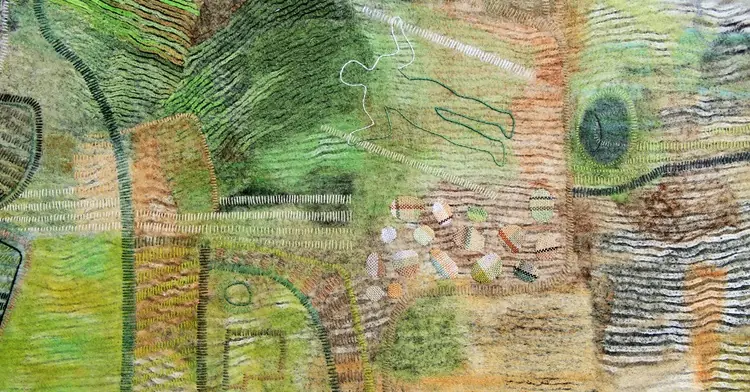
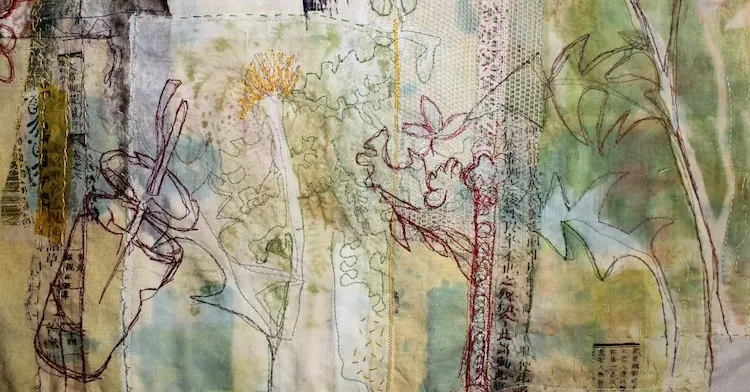
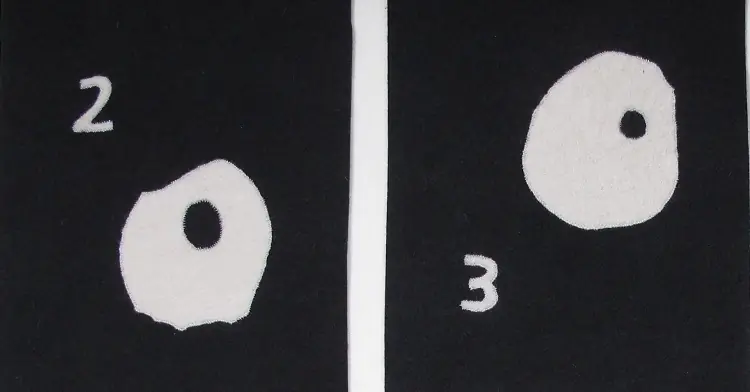
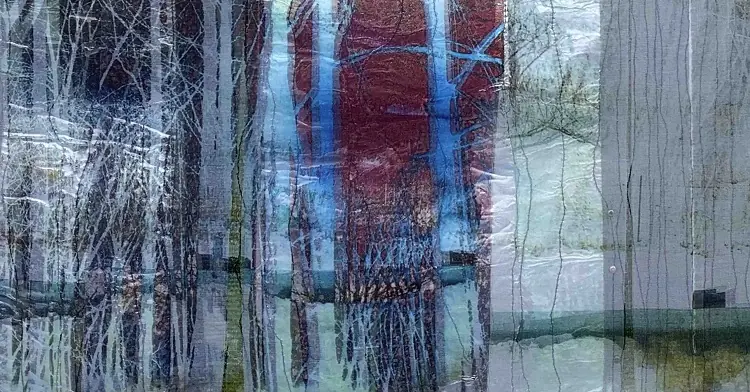
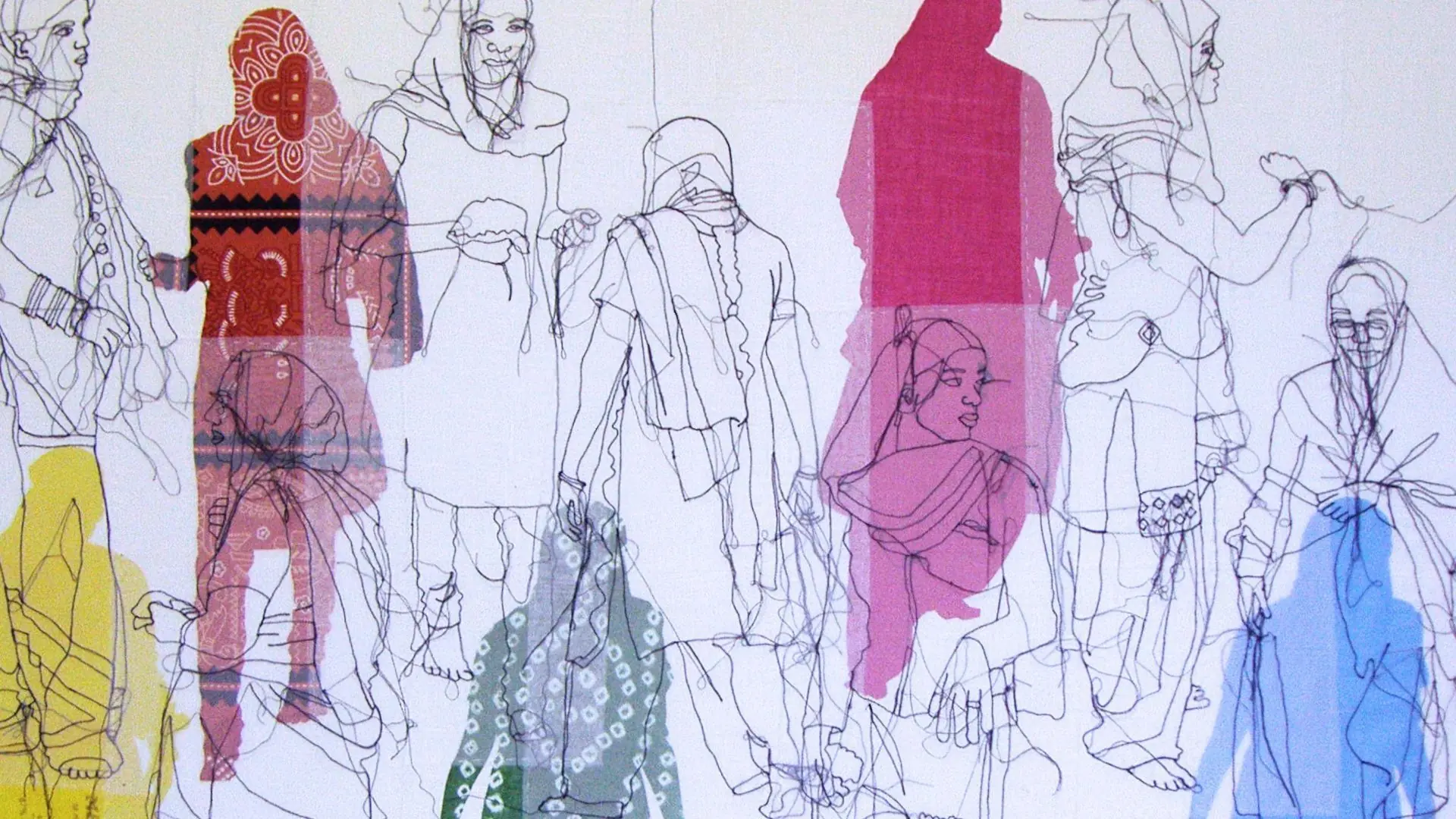
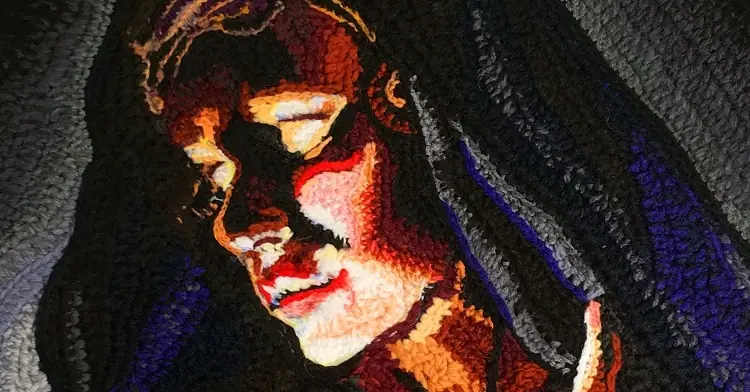
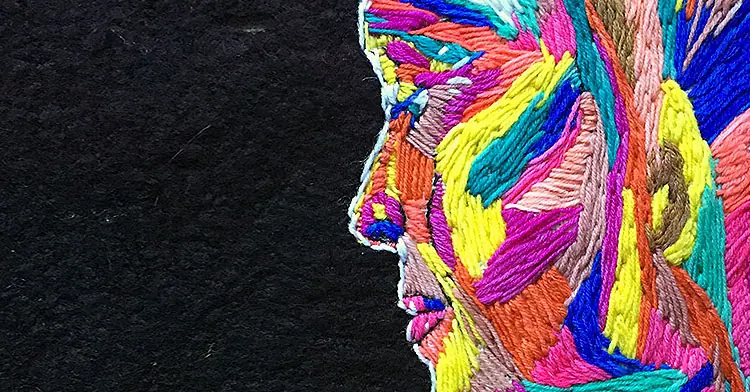
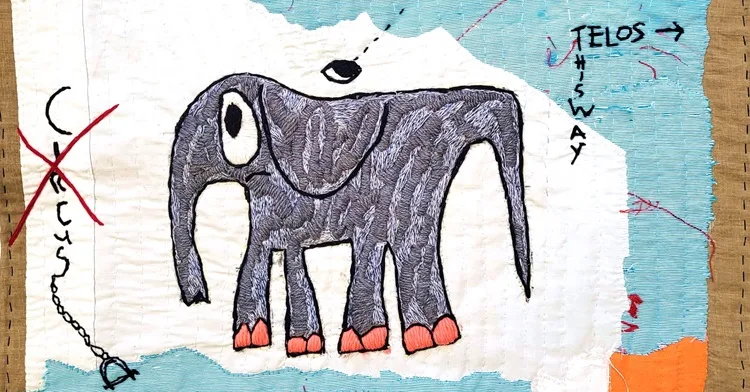
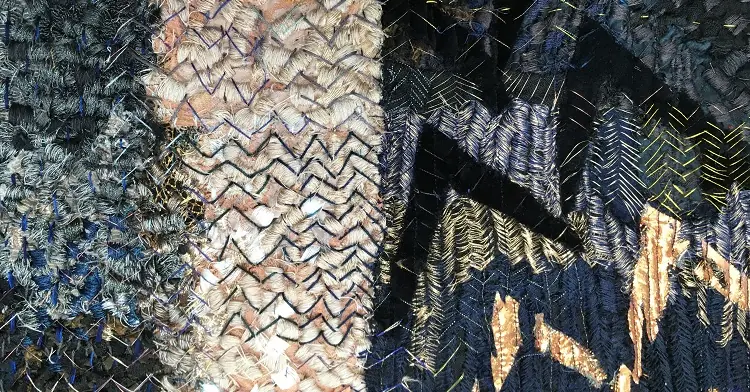
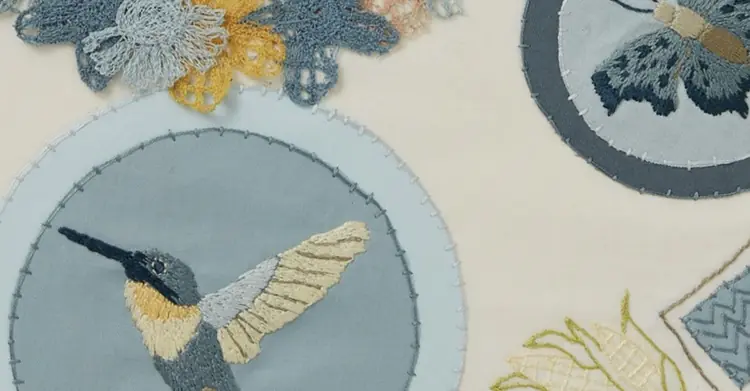
Comments